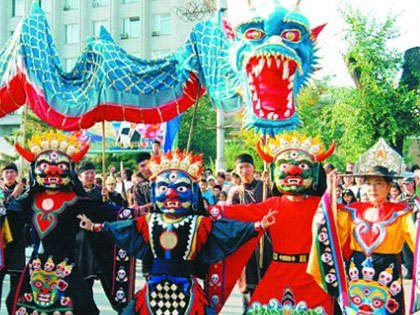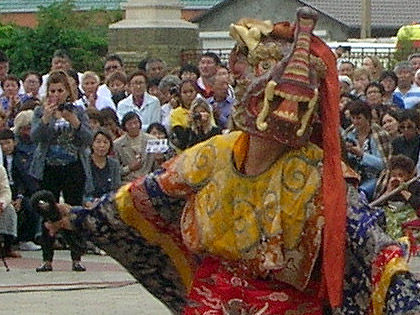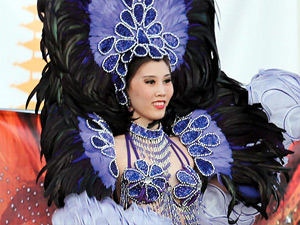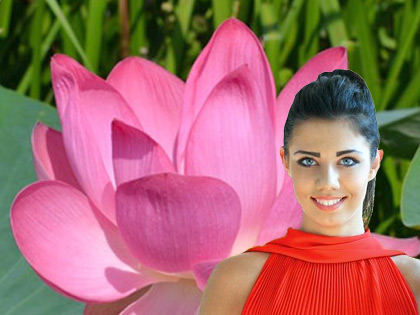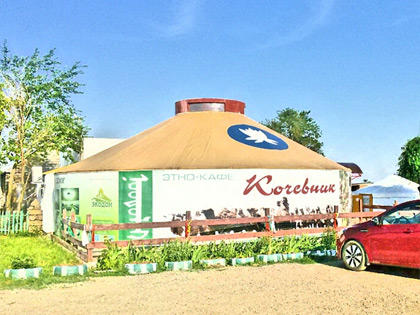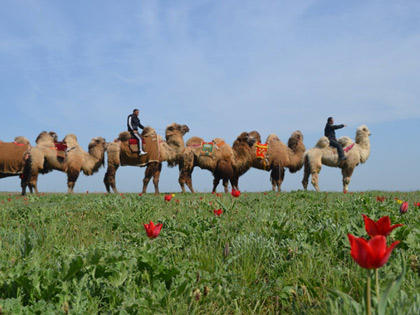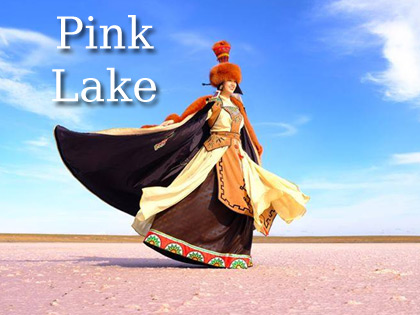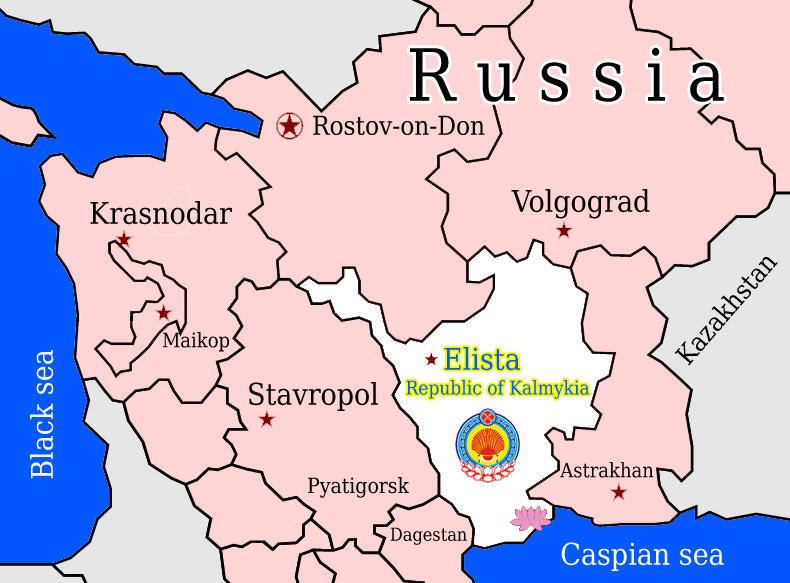Professor from St. Petersburg about Buddhism, kalmyk art, ritual dances and temples
 Professor from St. Petersburg Svetlana Makhlina about Buddhism, kalmyk culture, ritual dances and temples
Professor from St. Petersburg Svetlana Makhlina about Buddhism, kalmyk culture, ritual dances and temples
Buddhism – historically the first world religion. And yet, as Borges said, is “the most widespread religion in the world”. In Russia, the earliest penetration of Buddhism was characteristic of the Kalmyk people, who took more than 400 years ago.
Kalmyk culture germinated on the unique cultural soil elyutov who lived in a colorful country where the vast steppes “stretched white, happiness, koshmovye tent noble Noyon and zaisangs, but black as a bitter fate, tents commoners – albatu, ketchinerov and shabinerov”.
Before the revolution in Kalmykia was more than 100 monasteries, in which there were iconographical and Burhan wizard. In the art of Kalmykia implements original interpretation tradition of Buddhism.
Under Soviet rule, of course, all the religious art forms have tried to remove. In 1943, the Kalmyks on nationality were deported to Siberia. However, during the Siberian exile Kalmyks managed not to lose their identity, related to Buddhist culture. In addition, the Kalmyk folklore, imbued Buddhist ideas, enriched with songs Siberian cycle. Kalmyk folklore is so high that is of interest not only in our country. His works have been published in Vienna, Wiesbaden, Graz, Dusseldorf, Innsbruck, Leipzig, etc.
Today, in the regions and in the capital built khurul have become a place where the religious, cultural and educational life of the people. Focus more on khurul “Syakyusn-syume” (architect Vladimir Gilyandikov), which became the center not only of the religious life, but also the spiritual culture. It is a two storey building with a superstructure in the form of two-tier pagoda on the northern side. In the ground floor – entrance hall, prayer hall, where the depth of the altar and placed a large statue of the Buddha Sakyamuni. On the second floor – the library, a meditation hall, a small hall individual reception, several residences for senior clerics. This iconic building united nomadic Kalmyk architecture and Buddhist traditions. The connection diagram of the circle and the square expresses the many-valued image of the world mandala – diagrams supplied with the character structure of the universe and all the Lamaist pantheon of deities. In addition, the mandala can be devoted to any deity – depends on the characteristics of each icon. The temple – Gandzhur gilded with 12-nidanami rings that make up the Buddhist horoscope outer circle of samsara – the wheel of rebirth. At the front of the façade of the temple depicts two deer, raised his head and to the Dharmachakra Wheel of Dharma. These images, which symbolize the beginning of the preaching of the Buddha, made in copper master Nicholas Galushkin. Exercise wheel has 8 spokes – 8 stages of enlightenment. Statue of Buddha Sakyamuni with all canonical signs made by sculptor Vladimir Vaskin, who created images for many Buddhist holy buildings, erected in Kalmykia. In this temple are many other sculptures of: Tszonhavy, founder zheltoshapochnogo direction in Northern Buddhism, Tar, compassionate bodhisattva Avalokiteshvara assistants, Manjushri, the patron saint of knowledge and art, and numerous other images of the Buddhist pantheon.
The scenic design of the church, of course, is also permeated by Buddhist traditions and canons: posture, hand position, symbolism of colors and lines, attributes that reflect the functional purpose of the characters – Master Protector, the Compassionate Assistance or Grozny defender. Freedom of the artist is shown in the coloring, ethnic features images and decorating tips.
The varied work of contemporary artists is reflected in many exhibitions. Today we see a reference to the tradition of Buddhist art. Along with the canons of the artists introduced elements of the landscape of the region, ethnic features images of the exterior appearance and attributes of a real environment. But in the years of Soviet power in their work felt the influence of the motives of the national epic.
May 23, 2009 in Elista held a grand ceremony Tsam, the first in the last century in Russia. 32 Tibetan monks from the monastery Dzonkar Chode, where for 700 years the tradition of this mystery remains, showed ritual dances. The dances Tsama appears natural nature Buddhist deities – the defenders of living beings and nature. They drove the forces of evil, promoted a return to Kalmykia depth and diversity of Buddhist teachings. The ceremony was attended by 8000 people.
Costumed dances Tsam mystery emerged in antiquity. In the VIII century, they have been improved founder of Tibetan Tantric Padmasambhava and other Buddhist lamas. Performed Tsam monks men, but there are also several convents, practicing ritual dances.
Art and Culture Kalmykia very personable and largely have a long and interesting history, pierced Buddhist ideas. Thus, Academician BJ Vladimirtsov called Kalmykia second after India home tales, referring to ancient Indian book “Panchatantra” and Kalmyk fabulous series “Magic dead”. In these tales of the other world, and can be located on the ground and in the sky and the ground. Trehmirie is reflected in the mythology of the Mongolian people and is linked ultimately to Buddhist concepts. These tales kept storytellers – and djangarchy tuulchi, passing from mouth to mouth, “from Houghton in Houghton, ancient legends and songs about the exploits of the legendary warriors – the mighty and just Dzhangra, Khongor Scarlet Lion, Savr Tyazhelorukiy and Altan Tsedzhi clairvoyant”.
In the ritual poetry Kalmyks become important sorts of good wishes. They could be related to the different rites or consumer perceptions. It can be: yoryal (good wishes), magtal (praise), Hara (curse), jar kemyalgn (narration on the bone), wedding songs, Tarn (spell). Were widespread song-magtaly, songs, hymns praising the gods and priests.
“Jangar” – a series of epic poems. They tell of the exploits of the heroes and the Kalmyk leader Djangar. This epic has included the main features of the Buddhist worldview. Here we see the “interweaving of various genres of folk poetry, proverbs and sayings, good wishes and curses, one (magtalov) and songs … There are also some information about the folk dances”.
Like all kinds of art, dance Kalmykia permeated by Buddhist values. Sure, Buddhism suggests, and music. In our time, it is possible to hear the recorded AD Rudnev in July 1904 in Sarepta Lamaist prayer.
East ornament also reflects the Buddhist symbols. Kalmyks ornament has a volume character due to the development of each color tone. It decorates household items, interior space and tent parts.
In contemporary art, Kalmykia reflects the “wisdom of the ancestors”.
Svetlana Makhlina, Professor, St. Petersburg
newspaper “News of Kalmykia”


